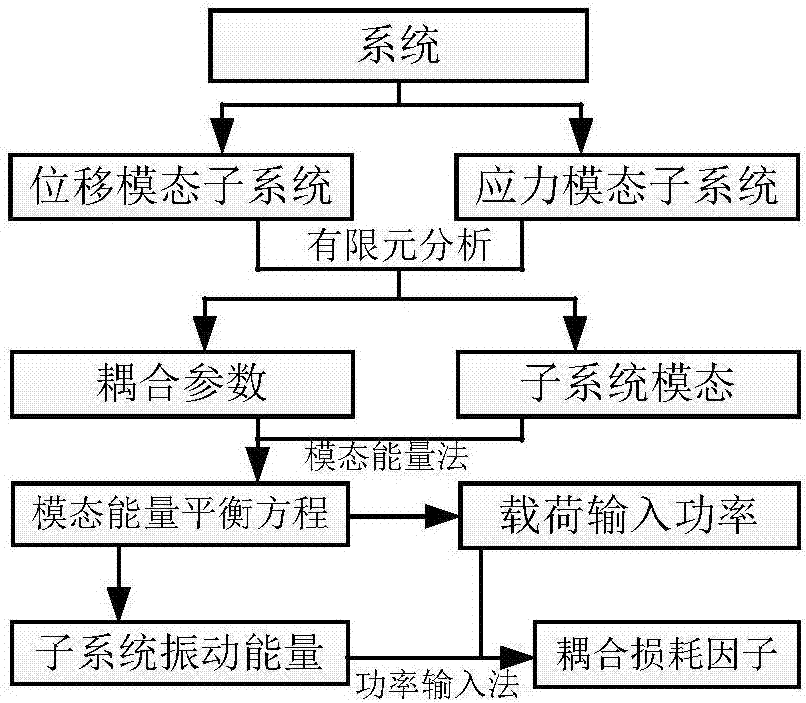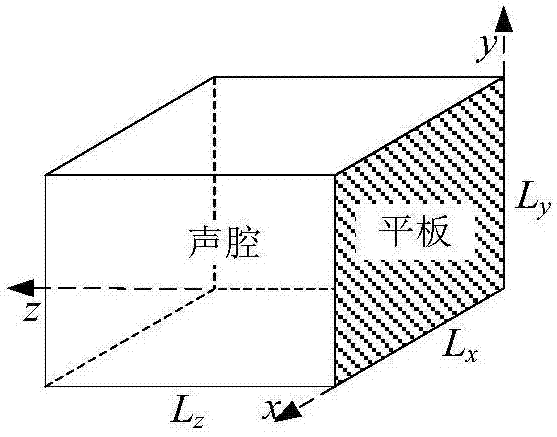A Numerical Method for Obtaining Coupling Loss Factor
A technology of coupling loss and numerical method, applied in the field of high frequency dynamic response prediction, can solve problems such as high cost, only applicable theoretical methods, long design cycle, etc., and achieve the effect of accurate calculation
- Summary
- Abstract
- Description
- Claims
- Application Information
AI Technical Summary
Problems solved by technology
Method used
Image
Examples
Embodiment Construction
[0045] The present invention will be further described below in conjunction with the accompanying drawings.
[0046] Such as figure 1 Shown is the principle flow chart of the present invention, mainly comprises the following steps:
[0047] Step (1) divides the system into continuously coupled subsystems:
[0048] Divide the system into continuous coupling subsystems with imaginary interfaces, and approximate the boundary conditions of the subsystems on the coupling interface, assuming that the more "rigid" subsystem is a free boundary on the coupling interface, and assuming the "softer" subsystem Fixed support on the coupling interface. The vibration of adjacent subsystems is described by displacement mode and stress / acoustic pressure mode, respectively.
[0049] Step (2) Calculate the mode of the subsystem:
[0050] The modal parameters of the subsystems are calculated based on the finite element method.
[0051] Step (3) Calculate the coupling parameters between modes ...
PUM
 Login to View More
Login to View More Abstract
Description
Claims
Application Information
 Login to View More
Login to View More - R&D
- Intellectual Property
- Life Sciences
- Materials
- Tech Scout
- Unparalleled Data Quality
- Higher Quality Content
- 60% Fewer Hallucinations
Browse by: Latest US Patents, China's latest patents, Technical Efficacy Thesaurus, Application Domain, Technology Topic, Popular Technical Reports.
© 2025 PatSnap. All rights reserved.Legal|Privacy policy|Modern Slavery Act Transparency Statement|Sitemap|About US| Contact US: help@patsnap.com



